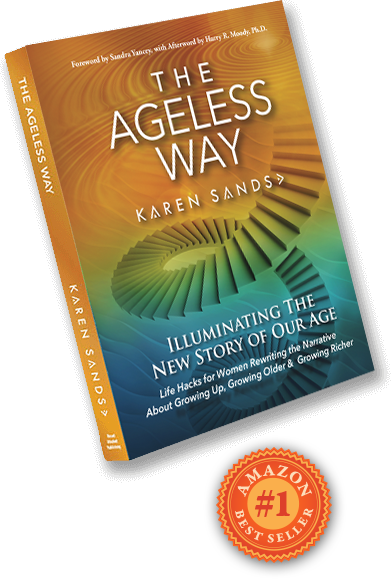 At Princeton University’s AlumniCorps’ I was invited to attend a first of it’s kind invite-only conference entitled, “Engage at Every Age.” The name alone put attending this event at the top of my “must-go-to” list.
At Princeton University’s AlumniCorps’ I was invited to attend a first of it’s kind invite-only conference entitled, “Engage at Every Age.” The name alone put attending this event at the top of my “must-go-to” list.
Going in all I knew for sure was that this event was created as a symposium for professionals in Higher Education who impacted and/or served alumnae/i of their respective institutions. I hadn’t a clue as to who would be in attendance (e.g., community colleges, state schools or Universities, or a mix?) Nor was it clear to me what positions, affiliations and partnerships would be present.
I arrived on the scene like a blank screen. My beginner’s mind was open for anything! It’s never easy to enter a new community, so as a newbie to this Higher Education space my hopes were high that this symposium’s mission would encourage the harvesting of ideas, while advancing collaborative alliances.
My primary intention for the event was to get the lay of the land of this emerging new-to-me space, so I can determine if there is a future “fit” for me as an expert speaker and consultant within this domain.
I was one of three colleagues representing our professional trade association, the Life Planning Network (“LPN”) (LifePlanningNetwork.org), with me as the lead scout for the Connecticut chapter’s fledgling Speakers Bureau. As a long time proponent of bringing high quality adult lifelong learning programs/institutes to alumni across the generations, I was wearing a few hats.
To our great delight the attendees were of the highest caliber from the crème de le crème top Ivy league Universities. Also present were representatives of highly respected non-profit civic and community partners, (e.g., the Bonner Foundation, Citizen Alum, Gephardt Institute, AmeriCorps, National Peace Corps, Encore.org and others.)
The content was of the highest caliber, plus of great interest.
[bctt tweet=”Harvesting ideas is the easy part, as it always is with high level critical thinking groups of professionals. “]
But we all know that many new ideas get stalled or shelved completely if there is no clear path to implementation. Impressively, AlumniCorps demonstrated it’s organizational commitment to cross-fertilization by bringing us together to dissolve the barriers between internal and external institutional silos. From the get-go, the existing community and civic partnerships with initiatives in higher education appropriately took center stage.
Little did I know how much of a massive download this conference was going to be.
At times I found myself wordless as I edged into information overload. Processing new lingo while attempting to connect the dots for all my constituencies was a mind twister. Bottom-line this conference was a non-stop harvesting fest of new understanding and unexpected “ahas.” Best of all, we are forging new connections and potential alliances.
What threw me off at first was the variety of institutional affiliations listed on the roster, as well as the disparate positional titles. It all fell into place when I realized that the attendees self-identified into four main affiliations: 1) Alumni Engagement and Alumni Associations, 2) Career Services, 3) Centers & foundations and 4) non-profit partners for civic and community engagement. Together these seemingly unrelated groupings had much to offer each other as well as to their student and alumnae constituencies.
Still I wondered if these professionals break down the typically impenetrable barriers that often times wipe out the inherent benefits of coming together.
Listening intently, the changing business model for higher education became all too clear. In an ever increasingly fragmented and competitive marketplace, all contenders in the [bctt tweet=”Higher Ed. space are forced to compete for incoming students at a greater intensity than in the past.”]
Institutional rankings have always been directly correlated to how many of the incoming students eventually graduate. What became apparent to me is that there is yet another worrisome shadow-driver of success for Higher Ed. which is now coming to light. The revealed driver is the plummeting number of graduating students (grad & undergrad) who are getting hired for jobs commensurate with their education—this reality is only exacerbated as we waddle our way out of the Great Recession.
Graduating on it’s own isn’t enough these days. Higher Ed. institutions today seek jobs and careers in prestigious organizations to keep their crème d’ la crème rankings so they can attract the best of the incoming student pool. The higher the ratio of graduates working as interns is an important positive benchmark. Better yet, job placements plus fast tracking within prestigious organizations ramps up institutional rankings really fast. Satisfying these voracious drivers of success ensures that the desirability ranking of the institution goes up and is sustainable, which in turn keeps attracting new entrants year after year.
The importance of alumnae/i donations and endowments remains just as important as it always has been. Overshadowing these monetary gifts are the new outreach efforts to engage alumni from graduation on. Alumni nationwide are hungry for this involvement beyond the request for donor dollars. Re-energizing (or launching) student alumni associations need to escalate as well cultivate this spirit of outreach and community around projects of mutual interest. Our institutions of Higher Ed. must re-engage for sure, but at every age and stage along our post graduation life course.
Tune in Next Monday for Part 2.
Karen Sands, MCC, BCC
Phone: 203.266.1100
Email: karen@karensands.com
Website: www.karensands.com
Address: PO Box 43 Roxbury, CT 06783-0043
Image credit: Dollar Photo Club







Leave a Reply
You must be logged in to post a comment.